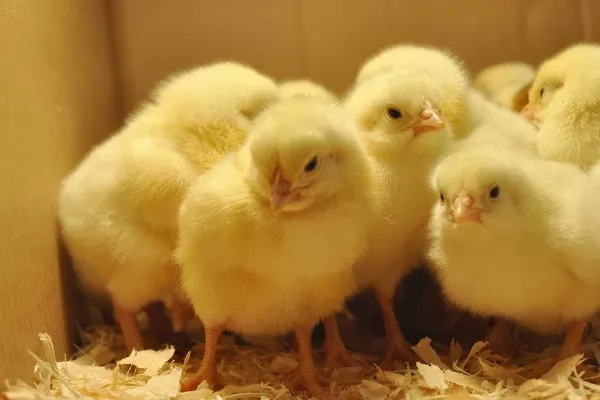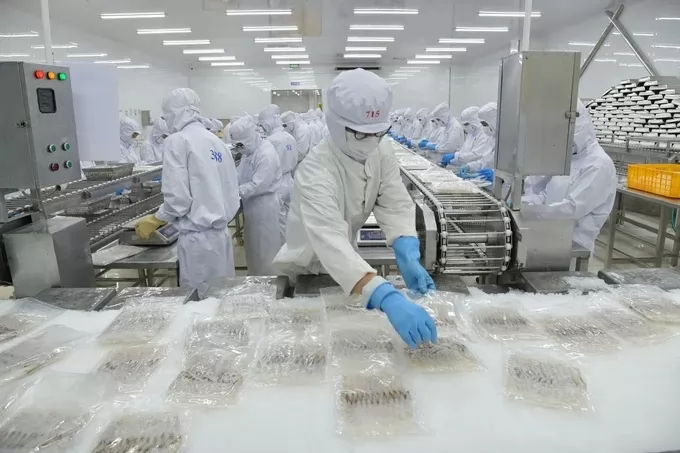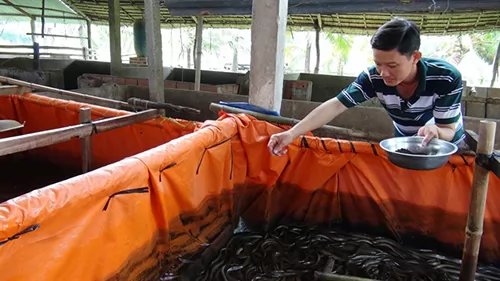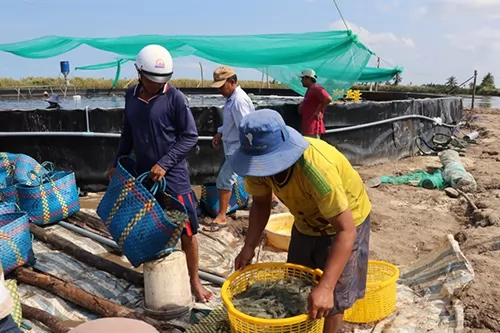In 8 months, Vietnam imported about 2 million breeding chickens

Every year, Vietnam still imports a large number of poultry breeds to serve domestic production. Photo: TL.
(VAN) According to the Chairman of the Animal Husbandry Association of Vietnam Nguyen Thanh Son, annual poultry breed imports are 3 - 3.5 million chickens/year.
According to Mr. Nguyen Thanh Son, Chairman of the Animal Husbandry Association of Vietnam, every year, our country still imports a large number of poultry breeds to serve domestic production.
Specifically, in 2021, Vietnam imported more than 3.8 million chicken and duck breeds; In 2022, nearly 3.4 million chicken breeds will be imported. Of these, there are nearly 2.2 million white chickens raised for meat, more than 723,000 coloured chickens raised for meat, and the rest are egg-oriented chickens.
In the first 8 months of 2023, our country also imported about 2 million chicken breeds of all kinds. The total number of ducks imported annually is 14,000 - 18,000.
The Animal Husbandry Association of Vietnam also provided a forecast scenario for poultry production and trade in the period 2024 - 2030. Specifically, the forecasted total annual poultry production from now to 2030 for white-feathered meat chickens is 240 - 250 million, 850 - 900 million Lavender broiler chickens, 80 - 85 million egg-laying chickens, 60 - 65 million meat ducks and 34 - 35 million egg-laying ducks.
From now to 2030, it is forecast that domestic meat and egg consumption will still account for a large proportion, about 90%. Poultry breed imports are forecast at 3 - 3.5 million birds/year. Imports of chicken and poultry by-products range from 250,000 to 300,000 tons/year.
The selling price of white-feathered broilers forecasted in the next 5-6 years will be ranging from VND 33,000 to 35,000/kg. The price of short-term Lavender chickens is VND 50,000 - 55,000/kg. The price of long-term Lavender chickens is ranging from VND 60,000 - to 70,000 VND/kg. Egg prices range from VND 2,000 - 2,500/egg.
Breeding households will gradually decrease, while businesses, especially foreign-invested enterprises (FDI) will expand their market share in poultry production. Accordingly, the proportion of households producing white chicken meat will decrease from 20% in 2023 to 10% in 2030, while the corporate sector will increase from 80% to 90%.
Lavender chicken meat produced by the household sector will decrease from 60% in 2023 to 45 - 50% in 2030, while the business sector will increase from 40% to 50 - 55% in 2030.
Egg production in the household sector will also decrease, from 44% in 2023 to only 35-38% in 2030, while the business sector will increase from 56% to 60-62% in 2030;
Animal feed production businesses, especially domestic businesses, will gradually decrease in both quantity and production scale and will be forced to stick with processing livestock to maintain market share.
According to the Tay Ninh Department of Agriculture and Rural Development, currently in the province, livestock production continues to shift from small to concentrated farms. This is to ensure biosafety by semi-industrial and industrial methods, with control, applying advanced technical advances, and minimizing environmental pollution.
The construction of disease-free livestock production areas associated with bio-secure livestock, and agricultural development meeting VietGAHP standards not only contribute to ensuring a safe food supply, and meeting export requirements but also a trend of modern livestock production.
Recently, the work of attracting investment in livestock has achieved positive results, especially the number of projects invested in the livestock sector has increased rapidly in both quantity, scale and application of advanced technology. Notably, many large enterprises, together with local farmers across the country, have built many processing factories with advanced technology.
In addition, it is necessary to create conditions for businesses that have exported poultry products to markets around the world to expand their production scale and develop products. Continue to expand markets and export poultry products to potential markets such as China, Korea, Philippines...
“Managers and businesses need to pay attention, in addition to attaching importance to the domestic market with more than 100 million people, exporting poultry products to other countries is an inevitable trend. To do that, we need to invest in in-depth research to align production with the needs and requirements of each export market. Specifically, animal husbandry processes must be strictly controlled, especially to ensure veterinary safety. Facilities, farms and livestock areas must be recognized and truly disease-free to think about exporting. Another solution is to organize the processing stage well", Mr Nguyen Dinh Xuan, Director of Tay Ninh Department of Agriculture and Rural Development emphasized.
Author: Hong Tham
Translated by Hoang Duy
Maybe you are interested

Vietnam\'s agricultural, forestry, fishery exports: USD 33.21 billion in 8 months
China, the USA and Japan continue to be the top 3 export markets of Vietnam's agricultural, forestry and fishery products in 2023.

Super–intensive farming of white-legged shrimp brings high profits
TRÀ VINH – Super-intensive white-legged shrimp farming areas have expanded threefold over last year after bringing in high incomes for farmers in the Cửu Long (Mekong) Delta province of Trà Vinh.

Kiên Giang to expand industrial shrimp farming
KIÊN GIANG — The Cửu Long (Mekong) Delta province of Kiên Giang plans to increase the area under industrial and semi-industrial shrimp farming models to 3,200ha and annual output to 28,000 tonnes this year, according to its Department of Agriculture and Rural Development.





